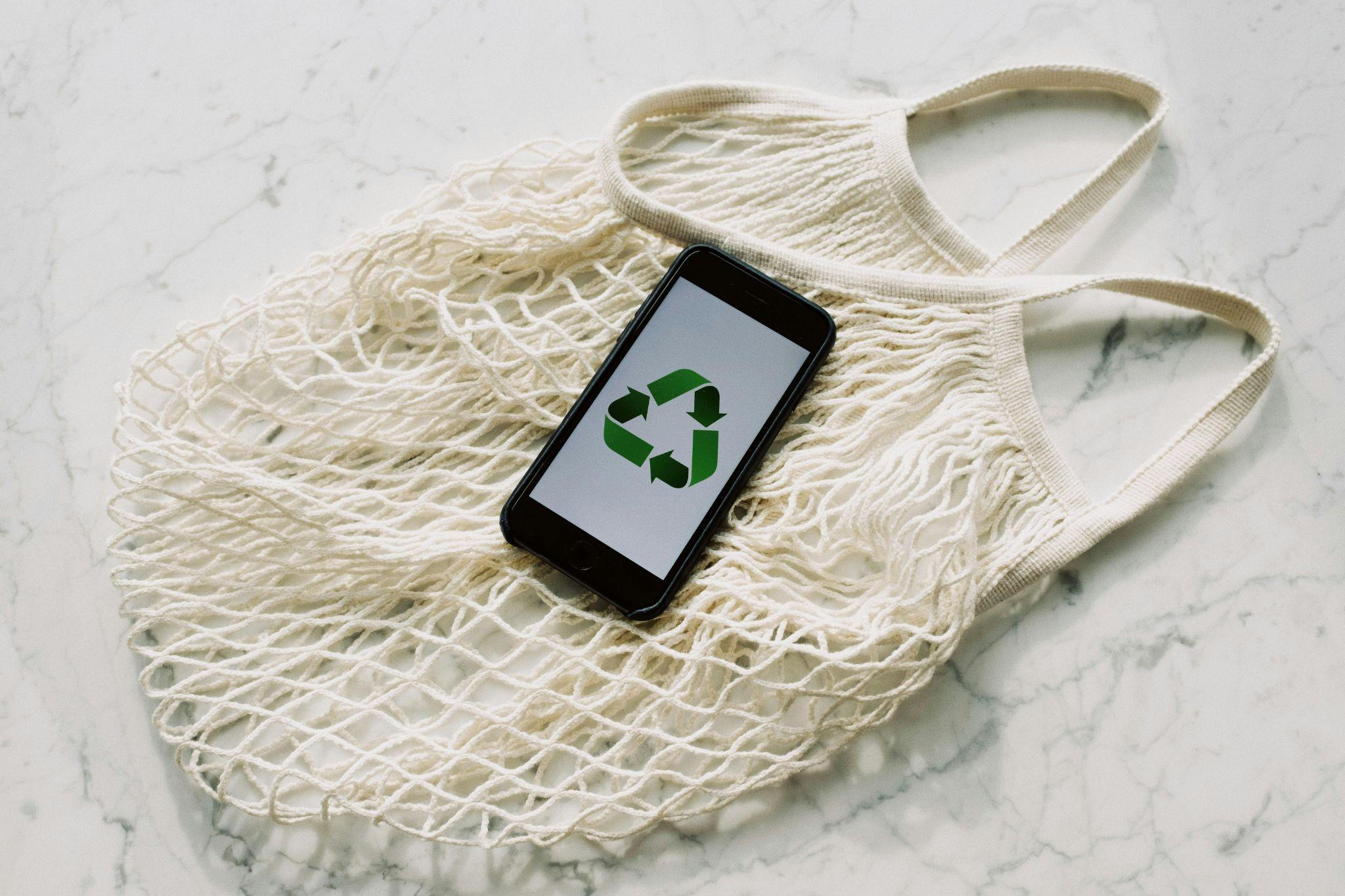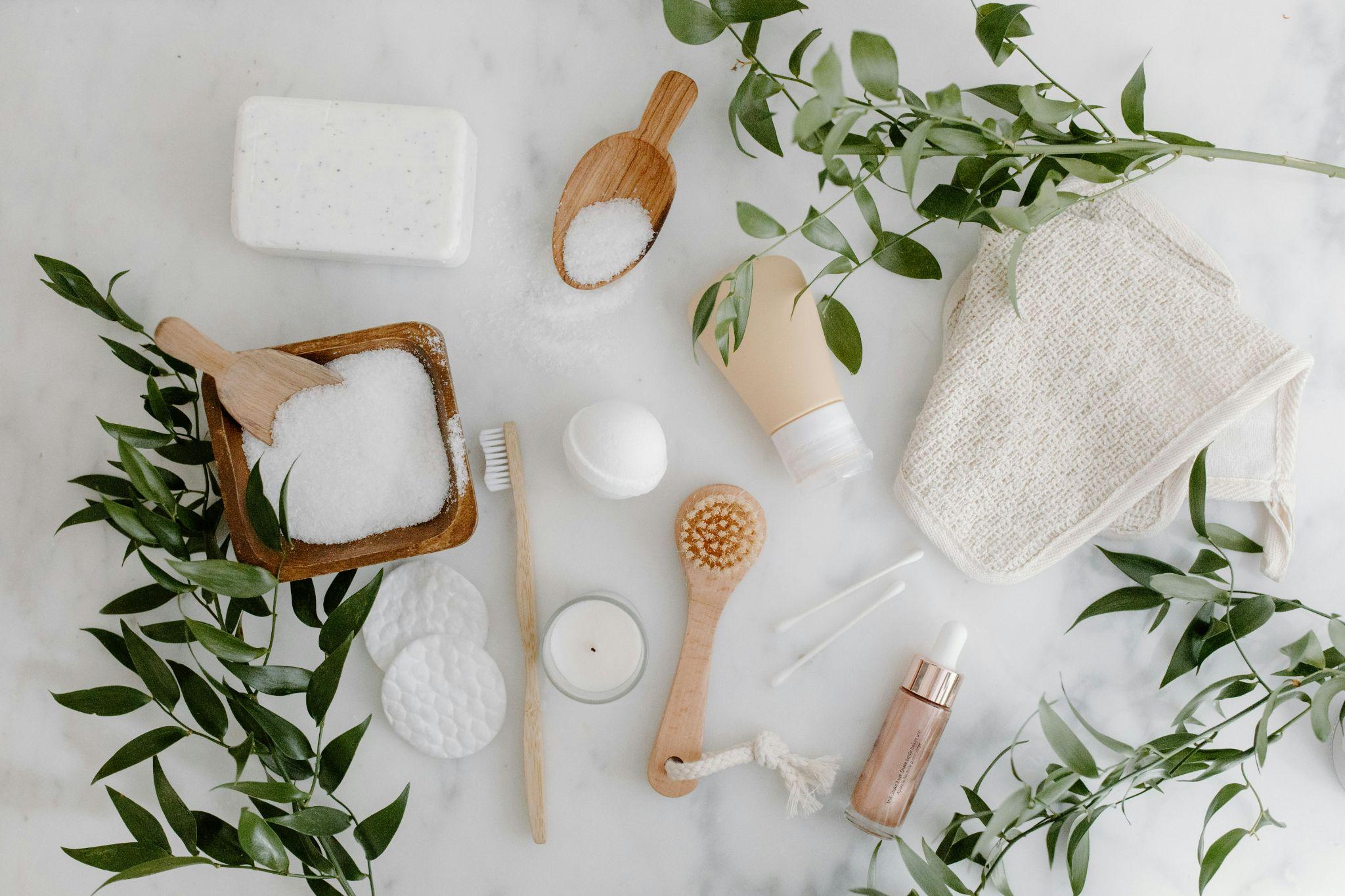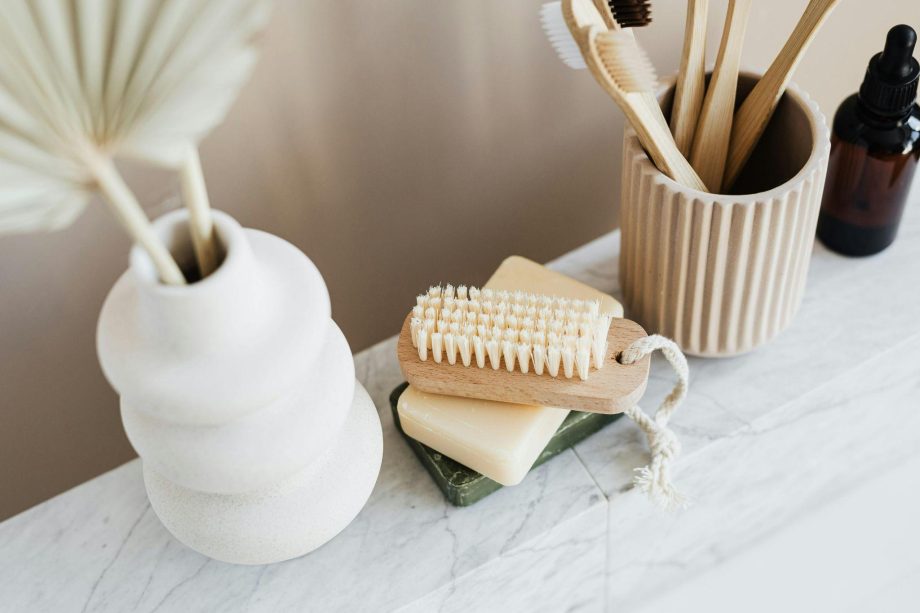The journey to build a sustainable beauty routine has gained unprecedented momentum as consumers recognize their purchasing power’s environmental impact. With an estimated 120 billion units of packaging produced every year, including plastic bottles, jars, tubes, and other containers that end up most of the time in landfills, the beauty industry is a major contributor to the global plastic waste crisis. Understanding how to create eco-conscious beauty practices while maintaining effective skincare and makeup routines empowers individuals to contribute meaningfully to environmental protection while prioritizing their health and wellness through cleaner, more transparent product choices.
Why Sustainability Matters in Beauty
The beauty industry’s environmental footprint extends far beyond packaging waste, encompassing water consumption, chemical runoff, and carbon emissions throughout the entire product lifecycle from ingredient sourcing to disposal.
Reducing Environmental Impact
Environmental concerns in beauty span multiple areas requiring immediate consumer attention and industry transformation:
- Packaging waste crisis from single-use plastics and non-recyclable materials
- Water consumption during manufacturing processes and daily product use
- Carbon footprint from global ingredient sourcing and transportation networks
- Ocean pollution through microplastics and chemical runoff from waterways
- Habitat destruction for palm oil, mica, and other beauty industry raw materials
- Landfill accumulation of expired or unwanted products and their containers
Skin Health & Chemical Transparency
Choosing clean ingredients benefits both personal wellness and environmental health by reducing exposure to potentially harmful synthetic compounds:
- Parabens – preservatives linked to hormone disruption and skin irritation
- Sulfates – harsh cleansers that strip natural oils and pollute waterways
- Phthalates – plasticizers found in fragrances with reproductive health concerns
- Formaldehyde-releasing agents – preservatives that may cause allergic reactions
- Synthetic fragrances – complex chemical blends often containing undisclosed allergens
- Triclosan – antibacterial agent contributing to antibiotic resistance
- Coal tar dyes – artificial colorants with potential carcinogenic properties
Core Principles of a Sustainable Beauty Routine
Establishing foundational habits creates lasting change while simplifying decision-making processes and reducing overall consumption without sacrificing effectiveness or personal care standards.
“Less Is More” Philosophy
The minimal product approach emphasizes quality over quantity while reducing environmental impact through decreased consumption:
- Streamlined routines focusing on essential steps rather than elaborate multi-step processes
- Multi-purpose formulations serving multiple functions to eliminate redundant products
- Quality investment in fewer, higher-performing items with longer-lasting results
- Mindful application using appropriate amounts to extend product lifespan
- Seasonal adjustments adapting routines based on skin needs rather than trends
Mindful Consumption & Product Lifecycle
Understanding the complete product lifecycle enables more conscious purchasing decisions and waste reduction strategies:
| Sustainable Practice | Environmental Impact | Personal Benefit |
|---|---|---|
| Finish before replacing | Reduces waste accumulation | Maximizes product value |
| Choose refillable options | Decreases packaging waste | Long-term cost savings |
| Proper recycling | Diverts materials from landfills | Community environmental health |
| Product sharing/swapping | Extends product useful life | Tries new items affordably |
| DIY alternatives | Eliminates packaging entirely | Customized formulations |
Opting for Clean, Certified Ingredients
Certified organic and biodegradable formulas ensure environmental compatibility while supporting ethical business practices:
- USDA Organic certification guaranteeing 95% organic ingredients without synthetic pesticides
- Fair Trade certification ensuring ethical labor practices and community development
- Cruelty-free verification confirming no animal testing in product development
- Biodegradable formulations breaking down safely in water systems
- Sustainably sourced ingredients supporting regenerative agriculture practices
- Local sourcing preference reducing transportation emissions and supporting regional economies
Step-by-Step Guide to Building Your Routine

Creating a sustainable beauty routine requires systematic evaluation of current practices followed by strategic replacement with environmentally conscious alternatives.
Audit Your Current Products
Conducting a thorough product inventory reveals consumption patterns and identifies opportunities for sustainable swaps:
- Catalog all products including skincare, makeup, hair care, and body care items
- Check expiration dates to prioritize usage and prevent waste
- Read ingredient labels identifying potentially harmful or unsustainable components
- Assess packaging materials noting recyclability and refill options
- Evaluate usage frequency determining which products are truly necessary
- Calculate replacement timeline planning sustainable alternatives before depletion
Select Multi-Use & Refillable Essentials
Multi-functional products and refillable systems form the foundation of sustainable beauty routines:
| Product Category | Sustainable Option | Multi-Use Benefits |
|---|---|---|
| Cleanser | Oil-based balm | Removes makeup + cleanses |
| Moisturizer | Tinted moisturizer | Hydration + light coverage |
| Sunscreen | BB cream with SPF | Protection + coverage + hydration |
| Lip product | Tinted balm | Color + hydration + protection |
| Cheek color | Cream blush | Cheeks + lips + eye color |
Introduce Sustainable Tools & Practices
Reusable tools and water-saving techniques complement sustainable product choices:
- Bamboo makeup brushes with biodegradable handles and synthetic bristles
- Reusable cotton rounds made from organic cotton or bamboo fiber
- Konjac sponges for gentle exfoliation using natural sea vegetation
- Stainless steel safety razors eliminating disposable plastic razor waste
- Refillable atomizer bottles for DIY toners and setting sprays
- Shower water conservation using low-flow showerheads and shorter wash times
Choosing Eco-Conscious Brands
Identifying genuinely sustainable beauty brands requires understanding certification systems and evaluating company practices beyond marketing claims.
Certifications & Transparent Sourcing
The COSMOS signature is a consumer guarantee for organic and natural cosmetics that you can trust. To date over 32,500 products in 81 countries carry our COSMOS ORGANIC or COSMOS NATURAL signature. Understanding these certifications helps consumers make informed choices:
| Certification | Standards Required | Consumer Benefit |
|---|---|---|
| COSMOS Organic | 95% organic ingredients, eco-packaging | Verified organic content |
| EWG Verified | No ingredients of concern, full transparency | Safety assurance |
| Soil Association | Strict organic standards, ethical sourcing | Environmental protection |
| Leaping Bunny | No animal testing globally | Cruelty-free guarantee |
| Cradle to Cradle | Circular economy principles | Complete sustainability |
Case Studies: Real-Life Sustainable Brands
Leading eco-conscious companies demonstrate various approaches to sustainable beauty:
- Ethique – Zero-waste solid bars eliminating plastic packaging entirely
- Tropic – Fresh, natural ingredients with carbon-negative operations and refillable packaging
- O’right – Biodegradable bottles made from rice water with carbon-neutral shipping
- Fat and the Moon – Minimal ingredient lists with locally sourced, organic components
- Plaine Products – Aluminum refillable containers with subscription refill services
Everyday Habits for a Low-Waste Beauty Routine

Incorporating daily sustainable practices amplifies the impact of product choices while developing environmentally conscious habits that extend beyond beauty routines.
Water-Saving Techniques
Water conservation during beauty routines contributes significantly to environmental protection:
- Turn off tap while brushing teeth, washing face, or applying products
- Shorter showers limiting time to 5-7 minutes for hair and body washing
- Cold water rinsing for final hair rinse to seal cuticles while saving energy
- Dry shampoo usage extending time between hair washes to reduce water consumption
- Concentrated formulas requiring less water for effective cleansing and conditioning
Packaging Reuse, Recycling & Upcycling
Creative repurposing extends packaging life while reducing waste streams:
- Clean thoroughly removing all product residue with warm soapy water
- Remove labels using heat or oil to eliminate adhesive completely
- Repurpose containers for travel sizes, DIY products, or organization storage
- Check recycling codes ensuring proper disposal through municipal programs
- Participate in brand programs utilizing take-back initiatives for specialized recycling
- Donate or swap unused products through beauty exchange communities
Common Pitfalls & How to Avoid Them
Navigating sustainable beauty challenges requires awareness of marketing tactics, realistic expectations, and safety considerations when transitioning to eco-friendly alternatives.
Spotting Greenwashing Claims
Marketing transparency helps consumers distinguish genuine sustainability from superficial green claims:
- Vague terminology like “natural” or “eco-friendly” without specific certifications
- Single ingredient focus highlighting one organic component while ignoring others
- Minimal packaging changes using recycled materials without addressing formulation issues
- Unverified claims about sustainability without third-party certification
- Selective disclosure emphasizing positive attributes while hiding problematic ingredients
Going Gradual Instead of Overhauling
Gradual transition prevents waste while allowing adjustment to new products and routines:
- Use current products completely before replacing with sustainable alternatives
- Replace one category monthly focusing on cleansers, then moisturizers, then makeup
- Test new products thoroughly ensuring compatibility before committing to full sizes
- Adjust expectations allowing time for skin adaptation to cleaner formulations
- Track results documenting skin changes and product effectiveness over time
Safe DIY vs Skin Sensitivity
Homemade beauty products require careful consideration of safety and effectiveness:
- Patch test all formulations on small skin areas 24-48 hours before full use
- Research ingredient compatibility ensuring safe combinations and proper pH levels
- Use clean tools and containers preventing bacterial contamination in preparations
- Start with simple recipes avoiding complex formulations without proper knowledge
- Consult professionals for persistent skin concerns or adverse reactions
Scaling: Moving from Personal to Purpose
Extending sustainable beauty impact beyond individual choices creates community influence and supports broader environmental protection efforts through collective action and advocacy.
Supporting Local & Small Eco Brands
Local sourcing reduces transportation emissions while supporting regional economies and sustainable business practices:
- Research local artisans creating handmade, natural beauty products in your area
- Visit farmers markets for small-batch soaps, balms, and botanical ingredients
- Join community-supported beauty programs offering seasonal, locally-made products
- Participate in local swaps exchanging gently used products within your community
- Recommend sustainable brands to friends and family expanding their market reach
Sharing Knowledge & Influencing Others
Community education multiplies individual impact through shared knowledge and collective behavior change:
- Host product swap parties allowing friends to try new sustainable brands affordably
- Share social media content highlighting favorite eco-friendly products and practices
- Write honest reviews helping others make informed sustainable beauty choices
- Advocate for refill programs requesting sustainable options from favorite retailers
- Mentor newcomers supporting others beginning their sustainable beauty journey
Conclusion
Successfully building a sustainable beauty routine requires systematic evaluation of current practices, strategic replacement with certified eco-friendly alternatives, and adoption of daily waste-reduction habits. The process involves auditing existing products, selecting multi-use and refillable essentials, and incorporating reusable tools while avoiding greenwashing claims through careful certification research. Gradual transitions prevent waste while allowing proper testing of clean formulations, and extending efforts beyond personal use through community education and local brand support amplifies environmental impact. Sustainable beauty represents an ongoing commitment to continuous improvement rather than perfection, where small, consistent choices collectively contribute to meaningful environmental protection while maintaining effective, health-conscious personal care routines.

